Search results for: 'For'
-
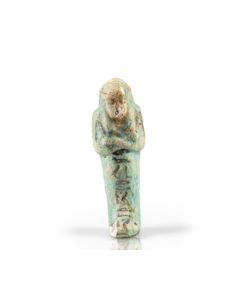 Ushabti for Bu-iri-eri-Renenutet
Ushabti for Bu-iri-eri-RenenutetEgyptian funerary figurine from the Third Intermediate Period. The owner's name is rarely attested and could hint to an origin in the Faiyum Oasis.
Price: on request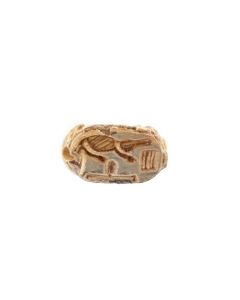 Egyptian scarab for Sobekhotep
Egyptian scarab for SobekhotepThe back of the scarboid body is shaped like a lying cat. New Kingdom of ancient Egypt, around 1000 BC.
Price: on request Egyptian ushabti for Viceroy Hori
Egyptian ushabti for Viceroy HoriOne of only 30 known funerary statuettes from the tomb of Hori I, King's son of Kush. Viceroy of Kush in Nubia during the reign of the pharaohs Ramesses III and IV. An exhibited and repeatedly published piece.
€8,850 Egyptian funerary figurine for Nefer-hotep
Egyptian funerary figurine for Nefer-hotepInteresting ushabti from Memphis dating to the late 19th Dynasty, New Kingdom. The owner was an official from the Temple of Ptah.
Price: on request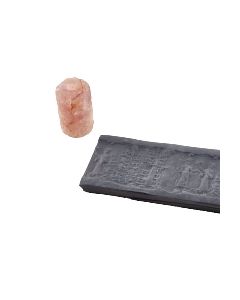 Elamite cylinder seal for Shuk-Kuku
Elamite cylinder seal for Shuk-KukuFantastic seal carved out of amethyst. It shows his owner Shuk-Kuku with the goddess Ninsianna. Five columns of Elamite cuneiform inscription frame the scene.
Price: on request Elamite cylinder seal for Aham-Lurshi
Elamite cylinder seal for Aham-LurshiEngraved in fine detail and well preserved. Scene with three gods. Three columns of cuneiform inscription name the owner Aham-Lurshi. Approx. 1900 to 1600 BC.
Price: on request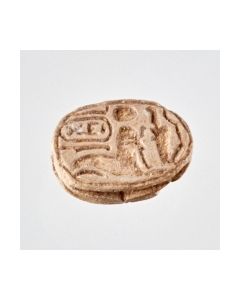 Memorial scarab for Thutmose III
Memorial scarab for Thutmose IIIA royal sphinx and Maat, the goddess of truth and justice adorn the lower side. Above them is the cartouche of Mencheperre. The piece is probably from the regin of Ramesses IV or V.
Price: on request Old Babylonian Cylinder Seal for Aham-arshi
Old Babylonian Cylinder Seal for Aham-arshiFantastic private seal with a rare depiction of the god Amurru. 1900 to 1600 BC.
Price: on request Old Babylonian cylinder seal for Ipqatum
Old Babylonian cylinder seal for IpqatumStunning historical document with three columns of cuneiform inscription naming the original owner and the Babylonian storm god Adad.
Price: on request Bronze Age casting mould for a chisel
Bronze Age casting mould for a chiselOne half of a stone mould for bronze casting. The equipment is from a workshop of the 2nd Millennium BC, probably from the Carpathian Basin. From the famous Guttmann Collection. This mould was published in a work by Born and Hansen.
€1,400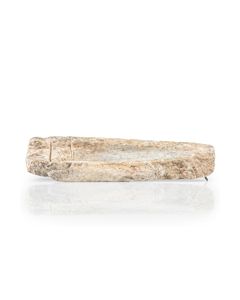 Bronze Age casting mould for a chisel
Bronze Age casting mould for a chiselOne half of a stone mould for bronze casting. The equipment is from a workshop of the 2nd Millennium BC, probably from the Carpathian Basin. From the famous Guttmann Collection. This mould was published in a work by Born and Hansen.
Price: on request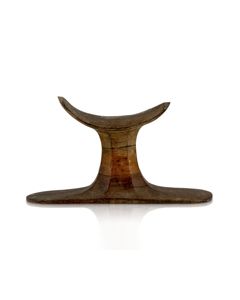 Egyptian headrest for a funeral or daily use
Egyptian headrest for a funeral or daily useThe well-preserved wood object is a rare example for this funenary ritual. The high quality piece was made around the Amarna Period in the late 18th dynasty of ancient Egypt.
€3,650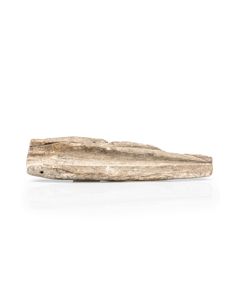 Bronze Age casting mould for a lance head
Bronze Age casting mould for a lance headOne half of a stone mould for bronze casting. The equipment is from a workshop of the 2nd Millennium BC, probably from the Carpathian Basin. From the famous Guttmann Collection. This mould was published in a work by Born and Hansen.
€1,400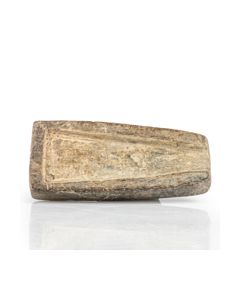 Bronze Age casting mould for a flat axe
Bronze Age casting mould for a flat axeOne half of a stone mould for bronze casting an axe head. The equipment is from a workshop of the 2nd Millennium BC, probably from the Carpathian Basin. From the famous Guttmann Collection. This mould was published in a work by Born and Hansen.
Price: on request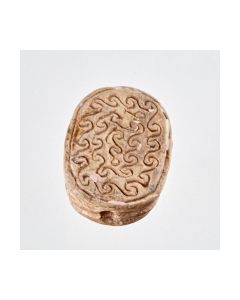 Scarab with spiral design and symbol for good luck
Scarab with spiral design and symbol for good luckThe Egyptian scarab from the Second Intermediate Period is decorated with a geometrical pattern. A nefer hieroglyph stands for good luck.
Price: on request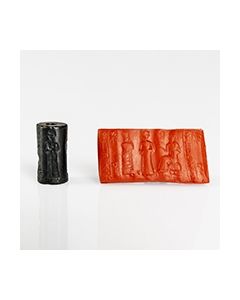 Old Babylonian cylinder seal with cuneiform inscription
Old Babylonian cylinder seal with cuneiform inscriptionWorship scene for a god. Mention of the Babylonian gods of storm, moon and sun in the inscription.
Price: on request Old Babylonian cylinder seal with cuneiform inscription
Old Babylonian cylinder seal with cuneiform inscriptionWorship scene for a god. Mention of moon god Sîn and Aya, wife to the sun god, in the inscription. 1900 to 1600 BC.
Price: on request Sumerian cuneiform clay tablet
Sumerian cuneiform clay tabletSmall tablet with drill hole. Cuneiform receipt for bricks or pottery. Very well preserved piece from the late 3rd millenium BC.
Price: on request Scarab with magic formula
Scarab with magic formulaThe stamp shows the anra formula in a cartouche. The amulet should thus serve a magic or ritual purpose for its owner.
Price: on request Cuneiform tablet from Umma
Cuneiform tablet from UmmaRecord of beer and bread rations for laborers. Probably from the Bronze Age city of Umma. The cuneiform tablet was studied and conserved at Yale University.
Price: on request Scarab with protective formula
Scarab with protective formulaAmulet for protection. Stilized lotus flowers on the upper side. Magic formula on the lower side. This scarab is described in the catalogue of Irène Gautier-Vodoz.
Price: on request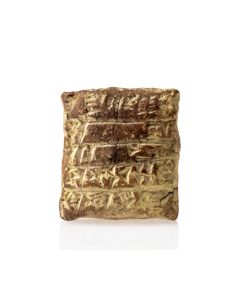 Sumerian cuneiform tablet
Sumerian cuneiform tabletThe clay tablet is a receipt of sheep and goats from the Sumerian city of Puzrish-Dagan. It was made during the reign of King Shu-Sin, 2037 to 2029 BC. From the Yale University Collection.
Price: on request Clay tablet with cuneiform text
Clay tablet with cuneiform textSmall cuneiform writing tablet with well preserved text on both sides.
Price: on request Old Babylonian cuneiform tablet
Old Babylonian cuneiform tabletVery nicely preserved clay tablet with cuneiform legal text from Old Babylonian times.
Price: on request Old Babylonian cuneiform tablet
Old Babylonian cuneiform tabletVery nicely preserved clay tablet with cuneiform administrative text from Old Babylonian times.
Price: on request Old Babylonian cuneiform tablet
Old Babylonian cuneiform tabletInteresting small clay tablet with cuneiform legal text from Old Babylonian times.
€1,890 Old Babylonian cuneiform tablet
Old Babylonian cuneiform tabletLarge clay tablet with cuneiform administrative text from Ur III to Old Babylonian times.
Price: on request Old Babylonian cuneiform tablet
Old Babylonian cuneiform tabletClay tablet with cuneiform administrative or legal text. Dating to the reign of Ammi-Ditana, a king of the first dynasty of Babylon.
€2,430 Mesopotamian cuneiform tablet
Mesopotamian cuneiform tabletSmall clay tablet with well preserved Sumerian cuneiform writing. From Mesopotamia, probably from Uruk.
Price: on request Minoische Votivfigur in Form eines Hundes
Minoische Votivfigur in Form eines HundesStehender Hund, der Kopf nach vorne gereckt, nach oben stehende Ohren. Orangefarbener Ton mit Resten eines roten Überzugs. Sehr gute Erhaltung.
Price: on request Ägyptische Gussform aus der Amarna-Zeit
Ägyptische Gussform aus der Amarna-ZeitGussform aus Terrakotta, für ein Amulett in Form eines Blütenblatts. 18. bis 19. Dynastie, 1600 v. Chr. bis 1100 v. Chr., Altes Ägypten.
Price: on request Cowroid with magical anra formula
Cowroid with magical anra formulaThe bottom side hieroglyphs of the anra type are to be interpreted as magical formula. The amulet dates to the Second Intermediate Period of ancient Egpyt.
Price: on request Clay tablet with cuneiform script
Clay tablet with cuneiform scriptSmall tablet with well preserved cuneiform engravings. Interesting Bronze Age document from Mesopotamia.
Price: on request Scarab with hieroglyphic formula
Scarab with hieroglyphic formulaThe piece is from the Second Intermediate Period. It was probably meant as a good fortune or protective amulet.
Price: on request ungewöhnlich geformte kanaanitische Öllampe
ungewöhnlich geformte kanaanitische Öllampe1500 v.Chr. bis 1000 v.Chr., vereint Merkmale der späten Bronzezeit und der Eisenzeit I, sehr flach mit hoher Dochtmulde, runder Boden, kein Randkranz.
Price: on request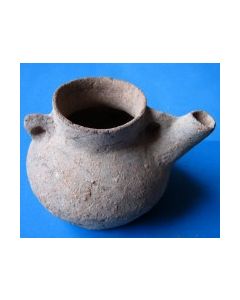 Bronzezeitliche Teekanne, Kugelform
Bronzezeitliche Teekanne, Kugelform2250 bis 1800 v. Chr., Mittlere Bronzezeit I/IIA. Perfekter Zustand, nicht restauriert. Äußerst seltenes Bindeglied zur MBII Epoche. Breiteste Stelle 120mm, Höhe 100mm.
Price: on request

